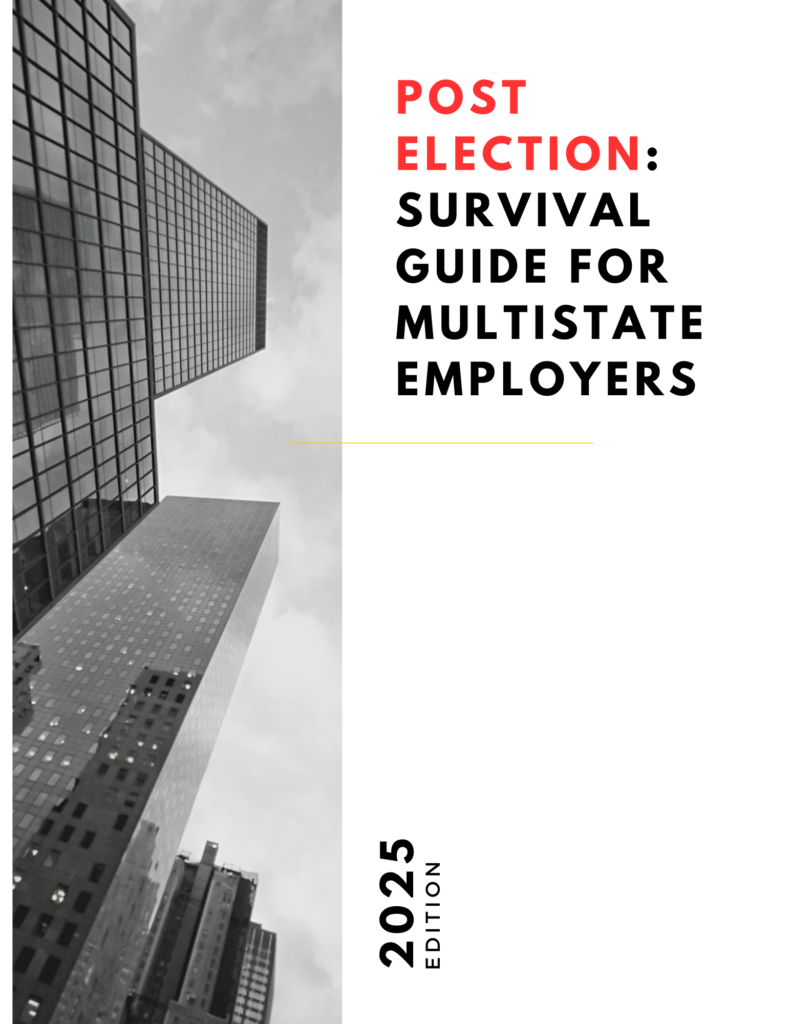
2025: How to Navigate a Deregulatory Administration Post Covid
Regardless of the election outcome, HR compliance is increasingly challenged by frequent shifts in labor and employment law. New York Times says, in the U.S., the presidency is on the verge of changing hands for the third time in eight years, the biggest period of White House instability since the 1970s.
HRs will, once again, need to prepare for the pendulum swing from the Biden Administration to the Trump Administration. According to recent Equal Employment Opportunity Commission (EEOC) Director, Keith Sonderling, while switching political parties was once normal, today’s policy shifts are more extreme, resulting in the reversals of 30-year precedents.
Last year, it was reported that the Biden administration was “rebuilding federal agencies hollowed out by Trump and Congress.” Recently, Trump says he plans to again gut regulatory agencies that Biden has been working to reverse. Traditionally, Republican-led senates and congresses prioritize cutting federal regulations and delegating regulatory power to states to achieve cost savings.
The result? During Trump’s first term, he stripped regulatory agencies, resulting in decreased regulations from Occupational Safety and Hazard Administration (OSHA) during the pandemic. On the other side, Obama’s regulations around the Affordable Care Act put an enormous burden on employers.
Most recently, in Loper Bright Enterprises v. Raimondo, the Supreme Court overruled the so-called 40-year Chevron deference to federal agencies’ regulations that says courts should defer to a federal agency’s reasonable interpretation of an ambiguous statute.
“Employers may have to follow fewer regulations and could be in a better position to challenge rules from federal agencies like the U.S. Department of Labor (DOL) now that the U.S. Supreme Court has overruled a 1984 decision that held courts should defer to federal agencies’ reasonable interpretations of ambiguous laws passed by Congress”. – SHRM
During his first term, President Trump was known to “shoot from the hip”, meaning he writes executive orders without planning for the execution. The strategy was to leave it to the courts and executive branches to work out. The trend has been to punt it to the next lower agency to work out the details and allow “courts to clip agencies’ wings,” according to EEOC Director Sonderling.
So what does the White House instability mean for employers? Fluctuating regulatory policies, whether it’s regulating or deregulating federal policies, requires HR to pivot often.
According to this chart, from the Regulatory Studies Center at George Washington University, regardless of a Republican or Democratic president in the executive office, we’re still seeing the same amount of pages published in the Code of Federal Regulations, increasing since the 1970s.
It’s critical to develop strategic approaches to know when to act, and understand the challenges ahead to better prepare for continued policy shifts that affect labor and employment law and HR compliance as administrations switch from one party to the other as they have done since 2016.
Looking Back to Look Ahead: Significant Challenges for Employers During the 2017 Trump Administration
Xpert HR conducted a survey in 2017 soliciting input from over 1000 HR professionals from small, medium to large employers on significant compliance challenges for employers during the Trump Administration. Here are their top findings:
What Employers Can Expect in 2025
Looking back on 2018, employers are dealing with similar issues in 2024. But perhaps the biggest change for 2025, according to Trump’s 2025 agenda, are plans to bring the Federal Communications Commission (FCC) and Federal Trade Commission (FTC) under the White House, no longer operating as separate agencies resulting in less federal regulation.
With the federal government’s reduced involvement, individual states are enacting their own regulations and the rise of remote work post-pandemic presents a new hurdle for HR compliance in 2025.
Supreme court litigation is where regulatory agencies get tied up and it leaves HR in a position to develop a strategy around a “wait and see” approach. Meaning, watch the rule play out in court and don’t act until it’s official. HR experts warn to ensure you always have a backup plan. The overtime exemption rule being one of them as employers get closer to January’s overtime exemption increase from the Biden Administration in early 2025.
Strategies for Navigating Government Policy Fluctuations
Covid’s impact on work has turned many employers into operating across multiple states and requires a strategic HR approach to keep up with the patchwork of regulations. To develop your approach, you might analyze pattern trends, schedule HR handbook updates, and determine the level of risk your current employer is comfortable with when it comes to compliance. Consider these questions to get this off your to-do list and prevent feeling overwhelmed.
HR experts say consistency in policy can become tricky in 2025. If you are like most of us, multi-state employers should prepare for extra support in 2025 to comply with state laws under a new Republican administration.
For more help, download our Post Election: Survival Guide for Multi-State Employers.

Advice in Your Inbox
Join our newsletter for free bi-monthly toolkits and downloads on how to hire, support, and retain your best talent.








